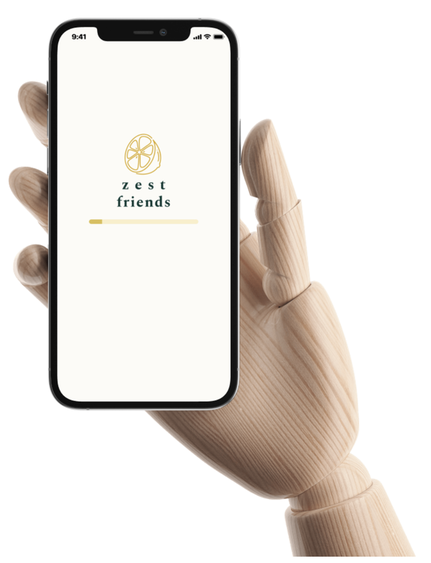Zest Friends-Spring 2022
For my HCDE 318 course my team was tasked with creating an app focused on returning back to pre-pandemic times, we decided to focus on helping University of Washington Students build community though a mutual hobby we all shared: cooking.
Overview
Problem Space During the pandemic, it was difficult for people to build community and financially support themselves due to prolonged isolations and increased rates of unemployment. As we come back to in-person activities, many of the struggles that surfaced over the last few years still exist. Through various forms of social media, our team had also noticed a trend: Many people were picking up cooking as a hobby during quarantine. Our project aims to resolve issues around lack of social interactions and financial struggles, as well as implement newfound interests of cooking, to connect and mutually aid each other post-pandemic via mobile app platform. We incorporated ideas from and/or worked with:
UW food pantry
UW mutual aid
Problem Statement How might we connect new low-income UW students in Seattle that hold cooking and food interests so that they can collectively build community and participate in food-related mutual aid efforts?
Goals
Have students feel safe while meeting new people through shared interests.
Foster a sense of community for students to come together based on shared interests.
Prioritize convenience for all users over their current grocery and cooking experience.
Provide users with helpful tools that are resourceful for their grocery experience.
Ideation Process
Our design process was backed by research consisting of interviews with current UW students, this then influenced our creation of the personas used. Given our research and ideal audience, we moved onto envisioning a product.
Interview Insights
We were able to derive many common characteristics, Goals/Desires, and Pain points from our interviews.
Personas
Our personas were created with our interview insights in mind, thus creating our target audience that we could create for.
User Journey Map
Given our target audience, we mapped out a visual of where we could alleviate common paint points with our product based on the user's goals/desires.
Lo-fi/ Information Architecture
Afterward, we decided to move forward in creating a lo-fi visualization of our product and deciding how we would like our audience to navigate our product.
User Evaluations
A key part of any design process is receiving user feed back and refining design choices. Reiteration and constant improvement are essential to any single prototype.
Our Method
In the case of Zest Friends, we needed help spring boarding our lo-fi prototype into something more complete and usable, so we needed test users to help iron out the user flows and further improve the user experience.We decided to conduct structured "Think-Aloud" user interviews as out method of getting user feedback. We conducted four interviews total with specific tasks in mind and asked participants to describe their thinking process as we watched them navigate through the app. This was beneficial to us as designers as we were able to better understand the way users navigated and how their memory of standards aligned or didn't with our design.
Hi-Fidelity Prototype
The High Fidelity prototype is the culmination of the preceding work. From the research that we started out with to making a journey map, from information architecture to the wireframes and improvements we made as we interviewed test users.
Our final prototype is a product of informed design decisions. We are confident in the design of our app and how it is backed up by all the research and analysis we conducted. It's important to recognize that this is not a finished product. This is a start to a world where students can connect over food in a way that encourages growth, connection, and mutual aid. With further usability testing, we would be able to improve our prototype based on what works and doesn't work with users.
Outcomes
There were quite a bit of outcomes from this project. The most valuable skill I gained from this project was learning how to work in a team setting along with creating a product as a collective. Similarly, I valued the opportunity at being able to conduct user research both before and post the ideation process and can use the skill in future projects. Lastly, I was able to learn a lot more skills in Figma by collaborating with my peers throughout the project.
















